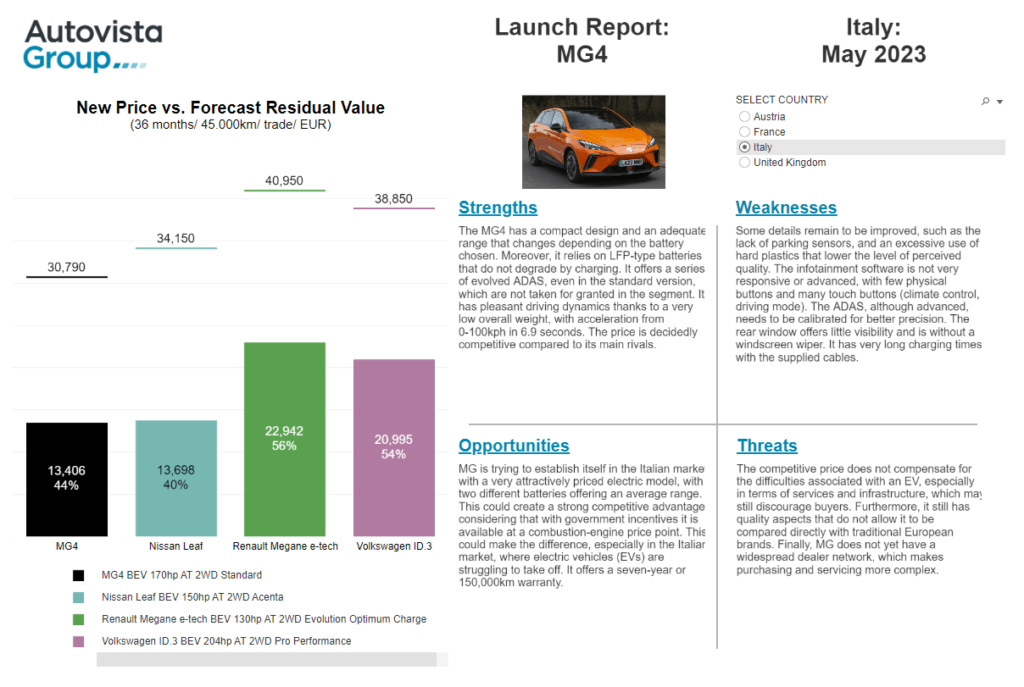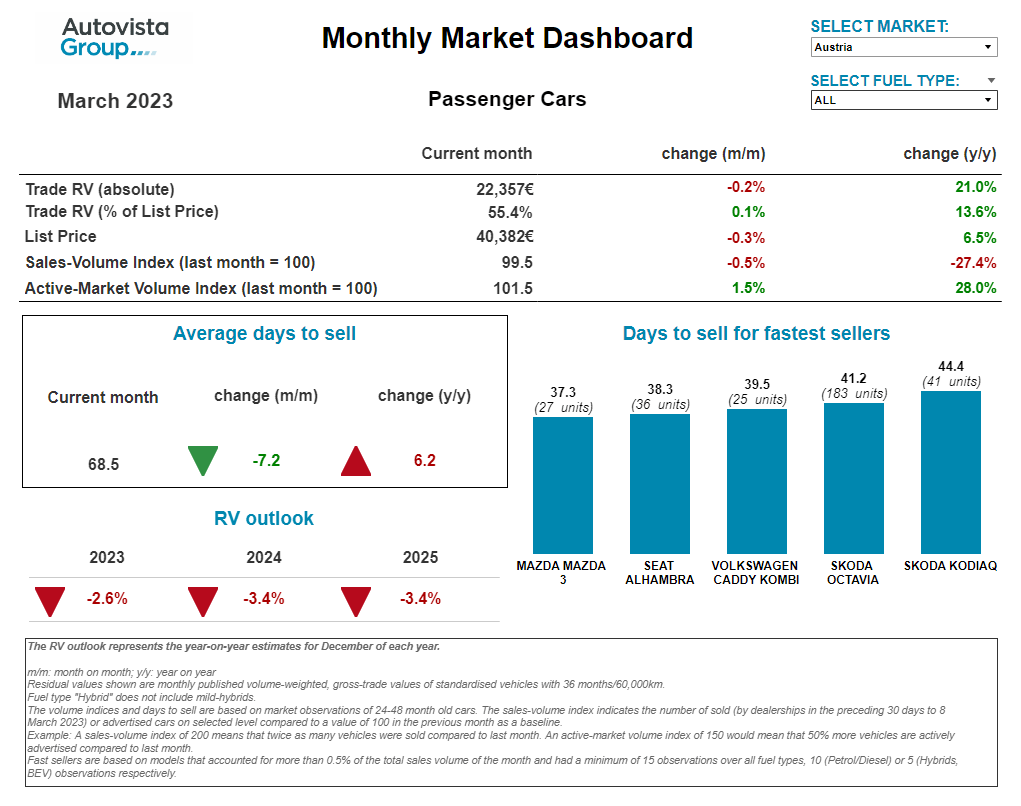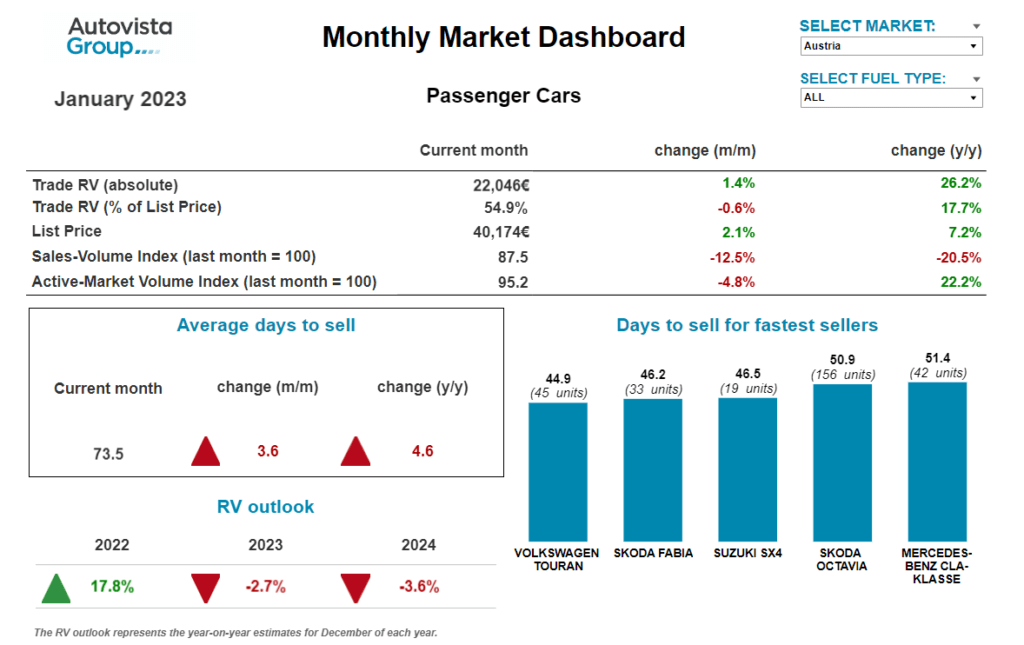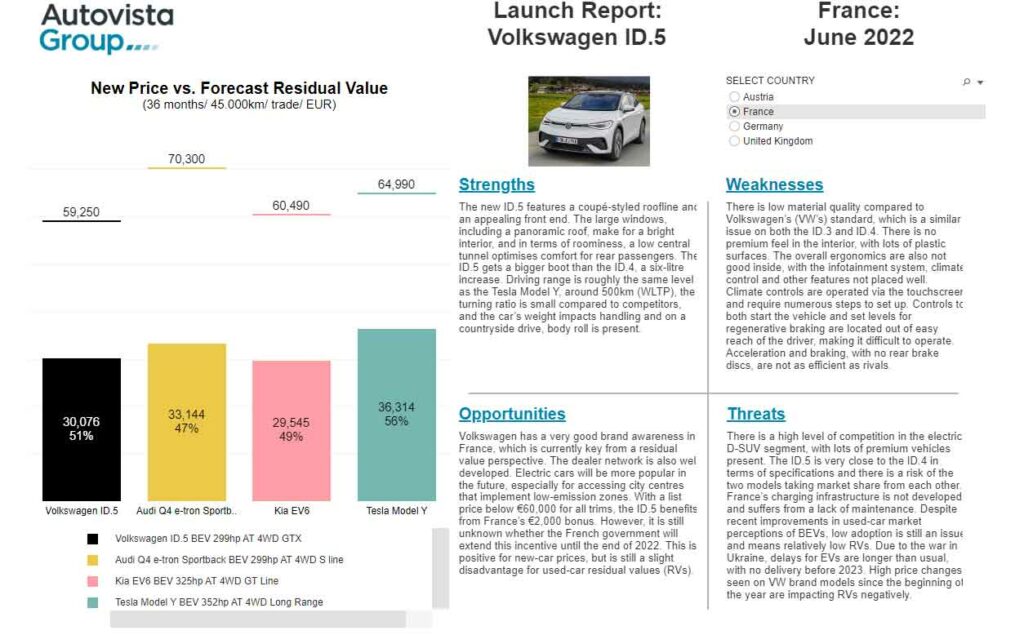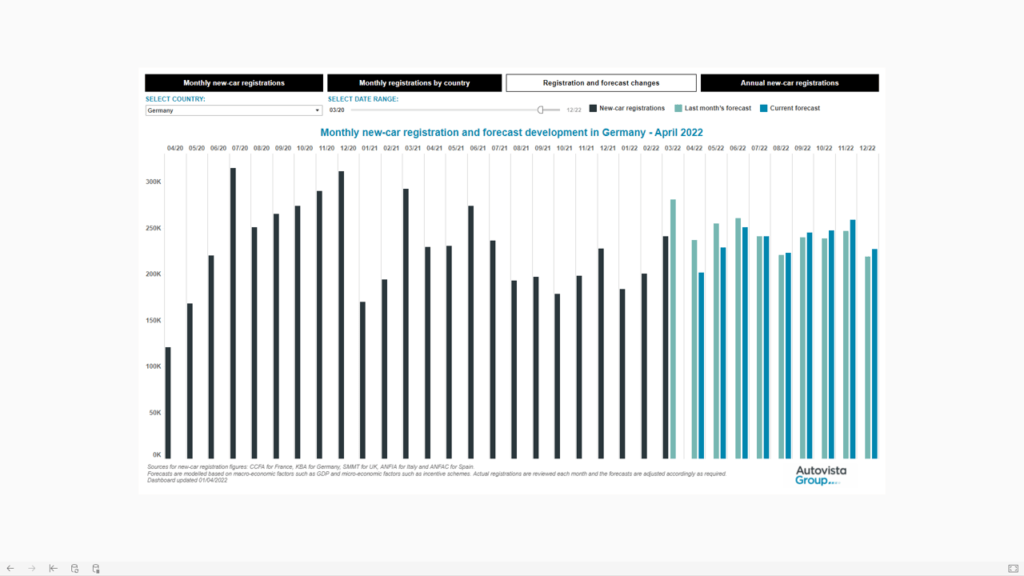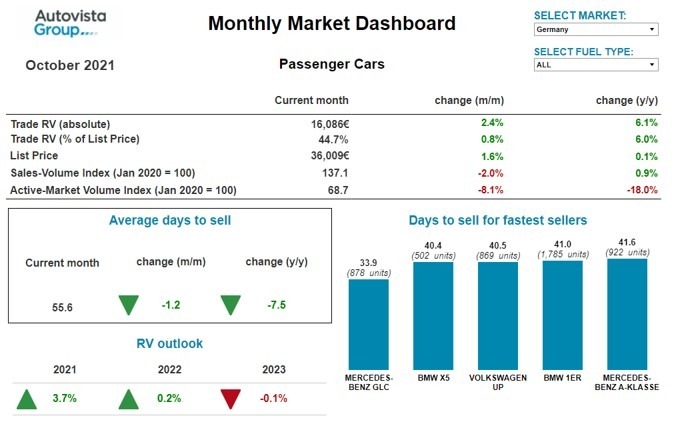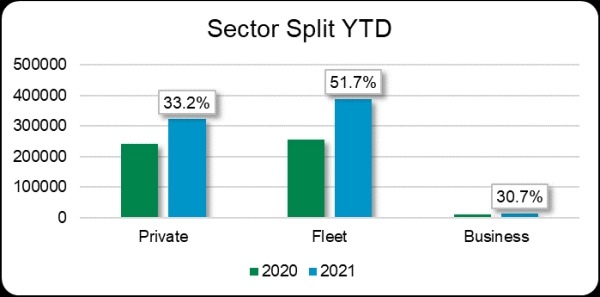When MG returned to Europe’s automotive market, it was not the marque of old. Instead, this was a new brand, owned by Chinese carmaker SAIC, that took aim at the neglected budget end of the sector.
The electrification of the industry presented MG with an opportunity, and the MG4 is its latest offering. The medium-sized battery-electric vehicle (BEV) appeals with its styling, practicality, and price.
Autovista Group experts from Austria, France, Italy, and the UK analysed the strengths, weaknesses, opportunities, and threats in their respective markets, benchmarking the MG4 against rivals and outlining both new-price points and forecast residual values (RVs). Click on the image below to view their insights in the latest dashboard.
Styling beyond the price
From the outside, the MG4 does not look like a budget BEV. It utilises the unique design aesthetics of electric vehicles (EVs) perfectly. The grill-free front end provides an angular point that emphasises a dynamic style while also acting as an aerodynamic influence. The front bumper sweeps out to two side grills, housing fog lights in premium versions, with a design reminiscent of the nose on a 2000’s-era Formula 1 car.
At the rear, the light bar extends beyond the vehicle hatchback, providing a boat-like deck that allows better visibility for the LED lighting, with an angular rear cluster wrapped around the side of the vehicle. The C-pillar is offered in gloss black, creating a floating roofline that flows across the top of the car when viewed from the side.
This side profile is let down a little by the lack of styling, with plastic sills and minimal body lines, while the wheels are lost within the large arches. However, its design still offers an impressive stance, well beyond its price point.
Comfortable and practical
Taking to the interior, the MG4 offers its occupants comfort, even on longer journeys. The 10.25-inch infotainment screen is a big improvement on earlier MG models, although it is not as refined as those offered by its competitors, and at times requires more pressure on the touchscreen. Most of the vehicle’s controls are housed in this system, with few physical buttons.
Another screen ‘floats’ behind the steering wheel, providing speed information, battery data as well as regenerative systems, and turn-by-turn navigation (an optional extra). Controls on the wheel itself allow for infotainment control. Meanwhile, taller drivers will benefit from the flat-bottom design.
The dashboard styling is futuristic, with a floating centre console offering the drive controls alongside the electronic parking brake. There is also a phone-storage space, with cable or wireless charging available in some options. There is plenty of storage for front passengers, with a cubby in the lower part of the console, as well as within the armrest.
Practicality continues to the rear, where a 363-litre boot can easily swallow up a couple of suitcases. Top-spec versions get a false floor, which is handy for EV-cable storage, especially as the MG4 does not feature a ‘frunk’.
The materials used in the interior may be cheaper than those of premium rivals and could be more prone to marks. However, it is not particularly noticeable and is overall a pleasant environment for both the driver and passengers.
Handling against its competition
MG has opted for rear-wheel drive with the MG4, and the battery arrangement gives a good centre of gravity. This means the car is very stable, with no rocking under acceleration and braking.
There is slight roll in the corners, but it is not dramatic and easy to get used to, while the softer suspension soaks up bumps. The MG4’s steering responds quickly, with the placement of electric motors in the rear providing a short turning circle, which makes light work of city streets.
The MG4 can cover around 450km on a single charge (according to WLTP figures), which is competitive against its more-expensive rivals. While the EV market is developing, and concerns remain about the price of BEVs compared to petrol and diesel vehicles, MG is proving that budget-electric motoring is not just possible, but practical and fun as well.
View the Autovista Group dashboard, which benchmarks the new MG4 in Austria, France, Italy, and the UK for more details. The interactive launch report presents new prices, forecast residual values, and SWOT (strengths, weaknesses, opportunities, and threats) analysis.
This content is brought to you by Autovista24.




 Close
Close